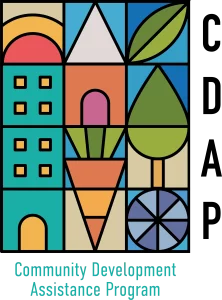During the construction of the Express lanes on I-75 north, people wondered if the two reversible toll lanes in Cobb and Cherokee counties would improve people’s commutes.
Now that these Express lanes have been open for almost six months, it’s a good time to check in and address that question and some others to gauge how well the new asphalt is performing.
So, are Commutes Quicker?
The short answer: Yes.
We know this because the State Road & Tollway Authority helpfully tracks speeds in both the Express lanes and the “regular” lanes along the I-75/I-575 corridor. Here are the numbers (drumroll please!):
- In the morning rush hour (6-10 a.m.), speeds averaged a zippy 71 mph in the two southbound Express lanes. Traffic in the general purpose lanes was a comparatively sluggish 55 mph.
- In the afternoon rush (3-7 p.m.), the average speed was 66 mph, compared to 50 mph in the general purpose lanes – interestingly, the same 16 mph difference as in the morning.
How Popular are the new Express Lanes?
The promise of a faster trip is proving to be a hit.
First, let’s look at the numbers: Nearly 2 million trips were taken on the Northwest Corridor Express Lanes (that’s the official name of the lanes – more on this a bit later) between Sept. 8 and Dec. 31, 2018.
Usage is almost the same in the morning and afternoon rush hours, with slightly heavier volumes in the p.m. – 1,006,549 vs. 961,279.
So, what do commuters think? Anecdotally, the lanes are getting a thumbs up from many drivers, according to a recent Atlanta Journal-Constitution story. Here’s some of feedback the paper gathered:
Vicki Porter commutes from east Cobb to the Cumberland area. She said the Northwest Corridor lanes have cut her commute almost in half.
“I am more than willing to pay what, for me, is a nominal fee for the ease of the drive and the time it saves,” Porter said. “It’s much more relaxing than the stop-and-start traffic on 75.”
Christopher Bennett’s afternoon commute from Midtown to Woodstock used to take up to two hours. Now it’s 45 minutes or less. The cost: $2 to $3 round trip a day.
“I no longer feel like my life is being wasted away sitting in my car, and I have a home life now,” Bennett said.
And more people seem to be trying the area’s commuter buses, which use the Express Lanes. Numbers weren’t immediately available, but riders say buses are more crowded than usual in the past few months.
Of course, not everyone is a fan. Some commuters grumble about having to pay to drive in the new lanes. Marietta resident Lisa Schuler-Jones told the AJC that “the lanes are really not financially realistic for the general population.”
How Do the Express Lanes Work?
The Northwest Corridor Express Lanes are part of a broader strategy to build a network of toll lanes on many of the region’s commuting corridors to offer a more reliable commuting option, whether that’s to get to work, catch a flight, or make a medical appointment.
Express lanes are also open on I-85 in Gwinnett County and I-75 in Henry and Clayton counties. Expansions are planned on Ga. 400 and the top end of I-285.
The new lanes in Cobb and Cherokee lanes are reversible: Traffic flows south toward Atlanta in the morning before changing direction for the evening commute.
The cost of a ride varies depending on traffic volume. The toll rises as volume increases, discouraging some drivers from entering the Express Lanes, and ensuring at least a 45 mph ride. All you need to access the lanes is a PeachPass transponder on your windshield and a PeachPass account with a little cash in it.
What Should We Call Them?
The official moniker is the Northwest Corridor Express Lanes.
Because that doesn’t exactly roll of the tongue, some drivers have affectionately dubbed it the Tollercoaster – big stretches of the lanes are elevated and rise and fall in sometimes dramatic fashion.
Hey, it may catch on. Anyone driven on Spaghetti Junction lately?
Image courtesy Georgia Department of Transportation
What’s Next ATL, produced by the Atlanta Regional Commission, is a community resource that explores how metro Atlanta is growing and changing, and how the region is addressing its most pressing challenges.


